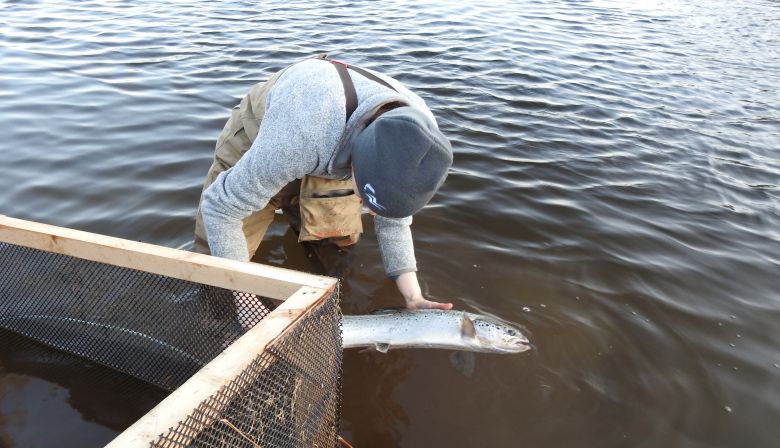We didn’t catch any kelt on April 3rd either, but people’s spirits were high, just having the chance to fish for salmon in the Hammond. Atlantic salmon angling has been closed there since 1990, but DFO issued a scientific license for this project.
With no fish landed the first weekend, Hammond River Angling Association project manager Sarah Blenis put the call for angling crews to return on Easter weekend and that’s when a single angler landed seven kelt, including three large salmon and four grilse.
The large fish were equipped with satellite and acoustic tags before release, while the small salmon, known as grilse, received only acoustics tags.
The technology carried by these fish is truly impressive. The satellite tags will hang on until next April. They will plot daily movement for a year before they pop-off, float to the surface, connect with a passing satellite and transmit stored data back to ASF headquarters.
The acoustic tags will last ten years. The signals they emit will be detected as they pass by receivers positioned along their entire migration route. The date and time of detection are recorded and stored onboard the receiver for later download and analysis.
Other rivers where kelt will be tagged as part of this DFO led project include the Restigouche, the Cascapedia and Moisie in Quebec, the Margaree and St. Mary’s in Nova Scotia, the Exploits and Salmonier rivers in Newfoundland and Labrador, and several others.

